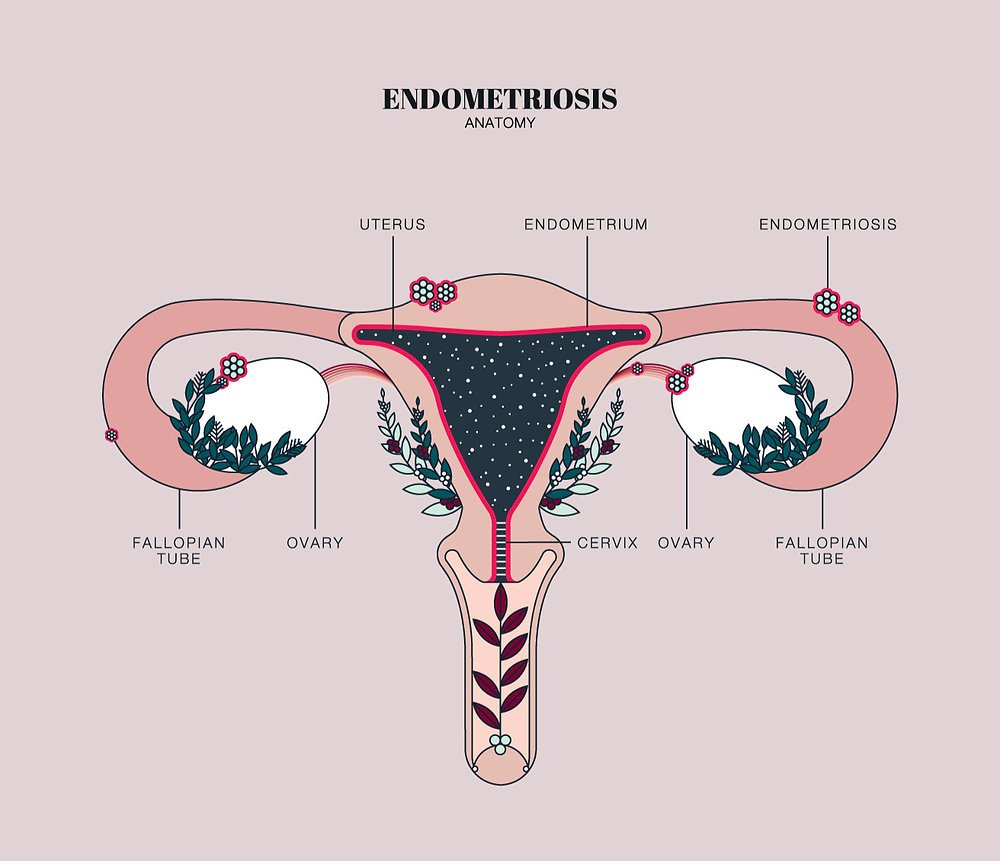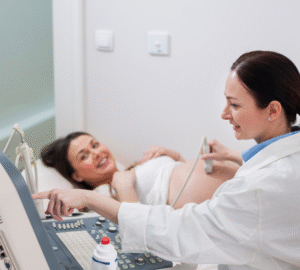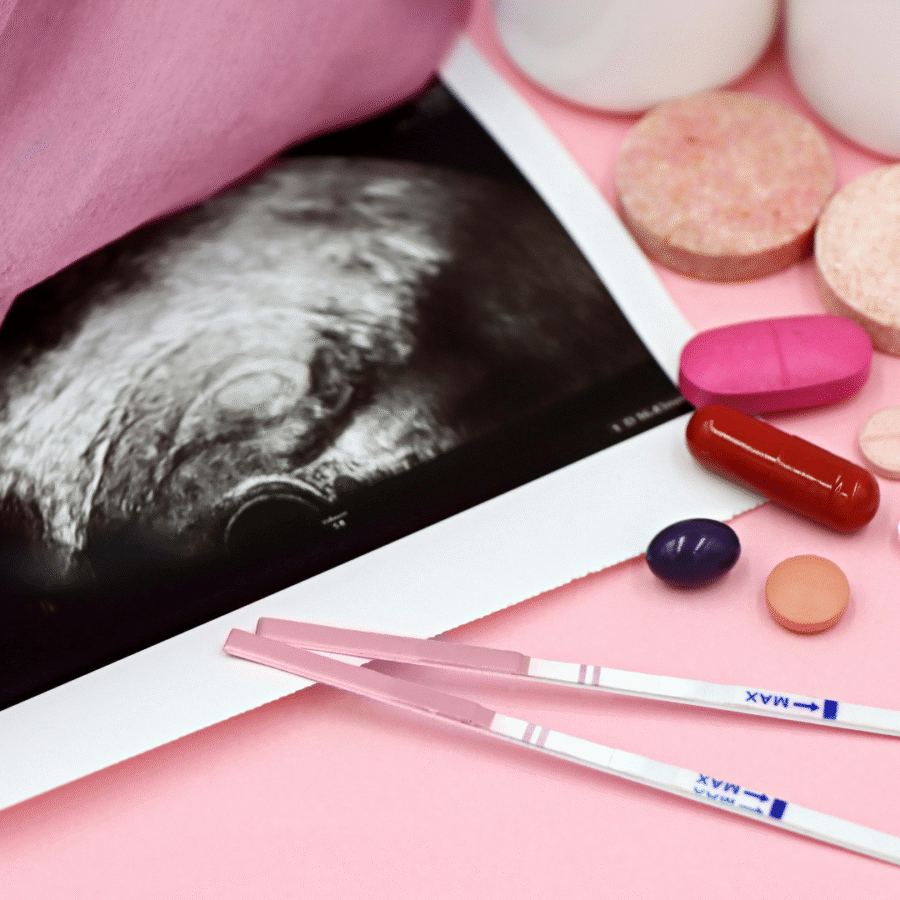Endometriois, a common but often misunderstood condition, significantly impacts menstrual health. For many women and girls, this manifests as painful, irregular, or heavy periods that disrupt daily life. In this detailed guide, we’ll explore how endometriois interferes with the menstrual cycle—with actionable advice supported by Karthika Woman and Childcare to support awareness and care
1. Understanding Endometriois: What It Is and How It Works
Endometriois occurs when tissue similar to the uterine lining grows outside the uterus—in places like the ovaries, fallopian tubes, or pelvis . These implants respond to hormonal cycles: thickening, breaking down, and bleeding with each period—just like the uterine lining does—but the blood has nowhere to exit, causing inflammation and scarring.
Common causes include retrograde menstruation (backflow of menstrual tissue), cellular transformation, and stem cell migration. Although endometriois affects approximately 10% of menstruating individuals globally, diagnosis often takes years due to misinterpretation of symptoms
2. How Endometriois Disrupts the Menstrual Cycle
a. Increased Pain: Dysmenorrhea and Chronic Pelvic Pain
Endometriois heightens menstrual cramps (dysmenorrhea) due to inflammatory prostaglandins, and pain often begins days before bleeding and continues throughout the cycle. Pain may also extend to the lower back, legs, and during intercourse or bowel movements. These symptoms frequently become disabling and deeply affect quality of life.
b. Heavy and Prolonged Bleeding
Women with endometriois often endure periods lasting 7 days or more, sometimes soaked through pads or tampons every 1–2 hours. Large clots—quarter-sized or larger—are common Hormonal imbalances and inflammation impair proper breakdown of endometrial tissue, resulting in excess bleeding and clotting .
c. Shortened Cycle Intervals and Spotting
Some people with endometriois experience shortened cycle lengths—less than 21 days—with bleeding or spotting between periods. Hormonal fluctuations, especially elevated estrogen relative to progesterone, contribute to unpredictable spotting and irregular bleeding.
d. Ovulation-related Pain (Mittelschmerz)
Endometriois can cause mid-cycle ovulation pain (mittelschmerz), intensified by implants that bleed or irritate tissues during ovulation. This discomfort might be mistaken for other conditions or dismissed as normal.
3. Hormonal and Systemic Effects
Endometriois leads to chronic inflammation and elevated cytokines such as IL‑6, altering prostaglandin production, increasing pain sensitivity, and impacting mood and digestive symptoms. These disruptions affect not only physical parameters but emotional and mental well‑being.
4. Personalizing Your Menstrual Tracking with Karthika Woman and Childcare
- At Karthika Woman and Childcare, we recognize that accurate tracking is essential in diagnosing and managing endometriois. Logging cycle length, flow intensity, clot size, pain timing, and spotting helps both patients and clinicians spot patterns early.
Karthika offers:
- A menstrual diary service designed for endometriois symptom tracking.
- Educational resources on endometriois, diet, and pain management.
Collaboration with local specialists to support diagnosis and treatment planning.
5. Recognizing When Menstrual Changes Are a Sign of Endometriois
While some variation is normal, consult a healthcare provider if:
- Periods last longer than 7 days
- You bleed heavily—changing protection every 1–2 hours or passing large clots
- Pain starts well before menstruation and is debilitating
- You experience spotting between cycles or ovulation pain
- You suffer from fatigue, nausea, bowel or urinary pain during periods
Often endomet. Early symptom tracking with tools like Karthika’s diary can accelerate diagnosis.
6. Diagnosis and Treatment Options
Diagnostic Steps
Diagnosis often begins with symptom history and physical examination, with imaging (ultrasound or MRI) for suspected implants or endometrioma (“chocolate cysts”). Definitive diagnosis typically requires laparoscopy with histological confirmation.
Treatment Strategies
- Pain relief: NSAIDs such as ibuprofen to block prostaglandins and reduce cramps
- Hormonal therapy: Birth control pills (extended‑cycle or continuous use), progestin IUDs, GnRH agonists/antagonists—to reduce bleeding and slow growth of implants
- Surgery: Laparoscopic removal of lesions and adhesions, often followed by hormonal therapy if pregnancy is not immediately desired
- Your specialist at Karthika Woman and Childcare can help tailor a treatment plan based on symptom tracking and diagnostic results.
7. Managing Your Cycle and Well-Being
Lifestyle Interventions
- Apply heat (e.g., heating pads)
- Practice gentle exercise or yoga to ease cramps
- Follow an anti-inflammatory diet rich in omega‑3s, fruits, vegetables, whole grains
- Manage stress through mindfulness or therapy—endometriois often affects mood and emotional health.
Supporting Tools
Karthika provides:
- Yoga and nutrition workshops tailored for those with endometriois
- Support group meetings to connect with others managing similar menstrual challenges
- Digital tracking support to share reports easily with medical teams
8. Why Accurate Symptom Tracking Matters
Menstrual data is increasingly recognized as a vital sign—experts call for routine inclusion in health records due to its diagnostic and preventive value. At Karthika, we encourage individuals to track:
- Cycle length and regularity
- Days of bleeding and spotting
- Flow volume and clot characteristics
- Pain timing and intensity
- Digestive or urinary symptoms during different phases
This information helps doctors reach diagnosis earlier and tailor interventions more effectively.
9. Long-Term Outlook: Endometriois and Your Future Cycles
Without treatment, endometriois may worsen—cycles remain painful, heavy, or irregular. Some individuals experience reduced symptoms after menopause, when estrogen declines. Hormonal treatments can temporarily suppress bleeding and pain, and surgery may improve fertility.
At Karthika Woman and Childcare, we support long-term cycle health through:
- Monitoring post-treatment cycles
- Offering follow‑up tracking and nutritional guidance
- Coordinating care to support fertility goals, if desired
10. Final Thoughts: Take Charge of Your Cycle
Endometriois can interfere with every aspect of your menstrual cycle—from timing and flow to pain and emotional well‑being. But with early tracking, medical support, and lifestyle adjustments, it’s possible to manage symptoms and improve quality of life.
Next Steps with Karthika Woman and Childcare:
- Download or request our endometriois tracking diary
- Book a consultation to review your cycle data and discuss diagnostic options
- Join upcoming educational sessions on diet, pain management, and mental health
Contact & Care Support
- 📍 Cloudnine thanisandra, and Sahakar Nagar
- 📞 Phone: +91 99728 99728
- 📧 Email: info@karthikawomanandchildcare.in
- 🌐 Website: https://karthikawomanandchildcare.in/
Remember: If your periods are consistently painful, heavy, unpredictable, or you notice changes like spotting or severe cramps, it’s worth speaking with a specialist. Endometriois is manageable—and your menstrual cycle can heal.




